I bought my orbifolia in january, and the brown and yellow spots on the big leafs were there when I bought it. But now (i think) the small baby leafs are turning yellow and brown, mostly on the tips but also in the middle of the leaf.. whats wrong?
I mist the plant everyday, the humidity is between 50 and 60, I repotted the plant and it is giving me new big leafs that are perfect. I water it maybe once a week, sometimes every 2 weeks. Depends on how the soil is. 
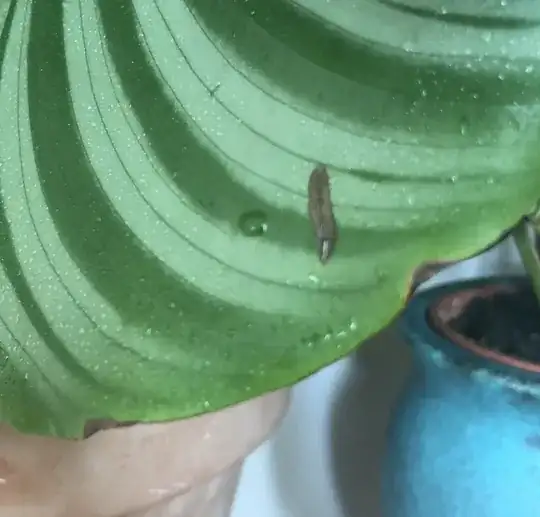
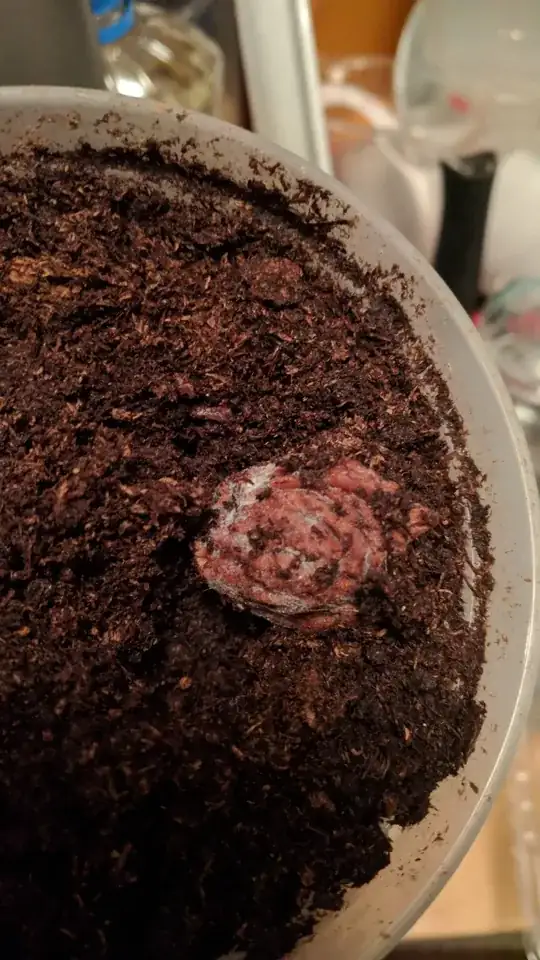
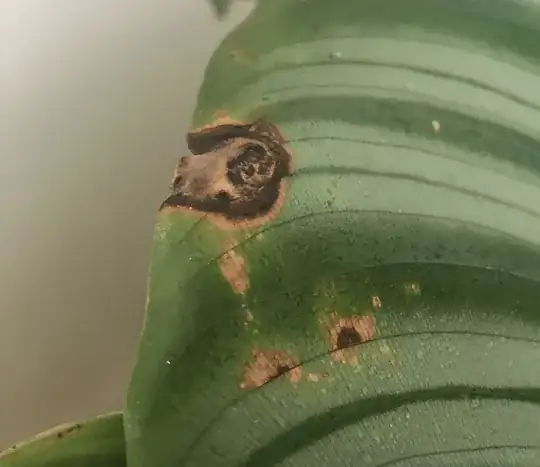
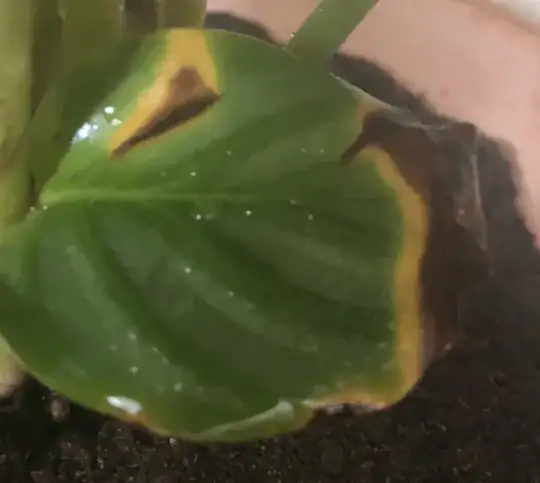
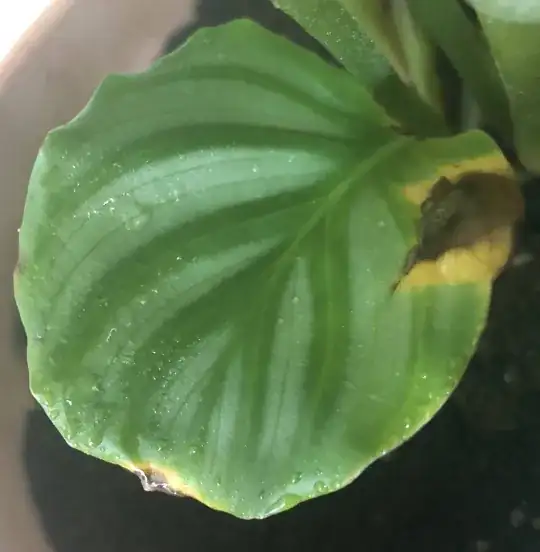
- 189
- 3
- 6
- 10
-
Stop misting. It does nothing for humidity. Humidity can bring major problems. You need humidity with air flow from a fan. A flat tray of pebbles filled with water half way up the pebbles is the best micro climate changer of humidity. Not misting. – stormy Jul 09 '18 at 22:22
-
Is that a tiny slug in the second picture? What are you using for soil? What are you using for fertilizer? – stormy Jul 09 '18 at 22:23
-
https://www.quiet-corner.com/garden-ideas/grow-care-calathea-orbifolia/ – stormy Jul 09 '18 at 22:37
-
I dont think it is a slug, if you are talking about the brown long dot. The soil is regular plant soil. But the plant was standing in a plastic pot with an outer pot before I repotted him to a terracottapot. In the previous pot the soil always seemed damp, and I had a few problems like that before. That the soil was constantly very moist. For example, my fittonia verch. never bent down for water, even though I didn’t water her that often. So, I repotted her into terra-cotta pot and she started to show signs of life again. I think I have the same problem with my Calathea ornata. – Cat Jul 10 '18 at 21:59
3 Answers
It may be an issue with your water. Are you using tap? Ive found Calathea definitely prefer filtered/distilled water. They are picky plants for sure.
- 21
- 2
I will start with the size of your pot. It appears from the close up pictures your pot is oversized for your plant. The pot will hold too much water for your plant can absorb. This can cause leaves to yellow, root rot and edema (blisters on the leaves).
If you plant had completely filled its last pot wit roots then it was time to repot it in a larger pot or remove some of the rots and soil and put it back in the same pot. IF the plant was ready to be repotted you may move it into a pot that is 2" (3" max) in diameter wider than the last pot. Such as moving a root bound plant in a 4" pot into a 6" pot.
If you wanted to repot it in a nicer looking pot, but it was not root bound you should have potted it in the exact same size pot. Such as moving a plant in a 4" plastic to a decorative 4" pot.
Then there is the misting. Misting leaves can create extra humidity for plants for those plants that need extra humidity. It also helps keep plants cleaner. Lastly it helps keep down on pest, like spider mite.
Excess misting can lead to spots on your plants leaves. The moisture should evaporate from the leaf in a few minutes. If there a puddle of water left on leaves it can cause water spots. Two types of water spots. Those from when the extreme light hits the water on the leaf and magnifies the light, cause your plant to burn. The second it basically like rot. The plant is unable to absorb the water, the water sits on the leaf for a long period of time and basically softens and breaks down the layers of the leaf, until there is nothing left but a spot.
This is similar to when you put your hand or body in water for too long. The skin starts to puckers. The layers of skin absorb too much moisture. The water works it's way between the layers of skin. The layers start to break down and peel.
Is it okay to mist your plant? Yes. Do not mist to the point of run off. If you are getting enough water built up to run off the leaf or puddle on the leaf, it too much mositure. Try misting the air around the plant instead of directly on the leaf for the majority of the time, if it needs additional humidity. (see below for better alternative)
There is such a thing as excess humidity. Excess humidity will lead to fungus growth on the leaf. Excess humidity is common, when the plant is not in bright light. If your plant receives no direct light or is completely shaded, you should not mist very often.
Instead put down a saucer filled with pebbles and water. Put your plant pot on the pebbles. Not in the water. This will create the humidity you want.
When to do mist. Mist once a week to keep the leaves clean and to keep down on pest. In this instance you can mist until it creates runoff. You just want to make sure the leave dry with in minutes, not hours. Put your plant a warm spot, avoid changing the amount of light too much or gently wipe down the leaves with a micro-fibre clothe.
- 2,338
- 1
- 6
- 19
I've read that tap water may contain salts and Fluorine which accumulate at the edge of the leaf. Rainwater or A/C runoff is best with dilluted fertilizer. But that's not all.
They require high humidity and should not be fertilized when soil is dry. Watering should allow constant moisture but not overwatering (think of rainforest floor: water drains but soil never dries in their habitat)
https://homeguides.sfgate.com/prune-calathea-23149.html
Regarding controlling humidity: I have found that misting is not as good as claimed to be. Use evaporative coolers or humidifiers for better results.
- 1,674
- 7
- 17